Marta Figueiredo tells us about one of her remarkable multi-sensory works that brings together all five senses in an experiential feast.
(A message to the reader in Portuguese.)
(A message to the reader.)
✿ How did the idea of the Elementary Abacus come about?
The idea for the Elementary Abacus first sprouted from a desire to create a lively and engaging domestic furniture piece. I aimed for something that could perform, delight the senses, and strike a chord of nostalgia while suggesting new ways to engage with a functional object at home.
Playing with the concept of a grown-up toy, the Elementary Abacus draws inspiration from the basic form of the traditional counting bead toy. It’s like taking the classic abacus, resizing it, and infusing it with a twist to suit adults.
The seeds of this idea were sown during my observations of people interacting with my totems, triggering profound sensory experiences. The vibrant colours, the textures’ inviting touch, and the ability to captivate both children and adults motivated me to create a design that would be all-inclusive. Growing up amidst individuals with various disabilities, including my sister’s autism and childhood friend’s cerebral paralysis, opened my eyes and senses to a different way of perceiving the world.
Witnessing my sister, Nini, taking immense joy from activities often dismissed as “childish” inspired me to view play as a powerful medium for fostering connection and creativity. Her unique sensory experiences, particularly with smell and touch, motivated me to explore how design could cater to a more diverse sensory landscape.
I also drew substantial inspiration from the book Senses: Design Beyond Vision, which delves into inclusive and multisensory design practices across various disciplines. This led me to investigate objects that stimulate the senses, ranging from toys to aids for individuals with diverse abilities.
From the initial sketches, I envisioned the Elementary Abacus as a lively addition to living spaces, blending enjoyment with sensory engagement. The traditional abacus’s colourful bead composition, allowing for interactive movement, presented itself as a versatile structure that perfectly embodies my vision of promoting inclusivity and creativity through design.
Moving beyond just visual attractiveness, the Elementary Abacus would encapsulate my desire to see more designs that induce a state of “openness to experience”: a design that welcomes everyone, regardless of their sensory abilities. A piece that challenges standardisation and advocates for product design’s potential to feature more sensory richness, traditional craftspersonship and modern technologies, without environmental compromise.
My hope was to create a design that people would find inviting, “easy to read”, pleasing and fun. I want them to feel accepted, relaxed and even celebrated by the piece, no matter their physical/mental state, or experiences.
- ABACUS, Raw 3D print of the spheres and steel frame structure before Powder Coating; photo: Jonathon Griggs
- Abacus blend testing: photo: Jonathan Griggs
- Marta Figueiredo, Elementary Abacus; photo: Jonathon Griggs
- Marta Figueiredo, Elementary Abacus; photo: Jonathon Griggs
✿ Where was it made? Can you describe the atmosphere of the workspace?
The Elementary Abacus was a collaborative effort brought to life by a team of skilled makers working at various locations. Callum Harley, a Furniture Associate at JamFactory, crafted the terrazzo table in blue jesmonite, infusing it with a pearlescent effect using sea shells collected from South Australian beaches. The vibrant polylactic acid beads were 3D printed at Fablab Melbourne University. These beads were finished with a diverse spectrum of textures and colours, including the delicate touch of 24-carat gold leaf carefully applied by an experienced gilder based in Mornington Peninsula. My visits to the gilder’s cosy home studio on the peninsula offered valuable insights into the time-honoured water-based gilding process, adding a touch of historical significance to the project.
Hand-sewn three-dimensional wool fabric patterns were sourced from the mountains in Portugal and applied to cover the PLA beads, adding a tactile layer to the design.
The 3D-printed cone, designed to accommodate an aroma diffuser and braille bumps, underwent a long process. Text translation into Braille, in collaboration with Vision Australia, led to the careful scaling and shaping of the text into a coil that complemented the cone’s design. The final touch involved adorning the cone with a soft burgundy velvet flocking, enhancing the sensory experience.
The incorporation of the braille feature served not only as a form of communication for the visually impaired but also as a tactile pleasure that fostered a dialogue between those who could see and those who couldn’t. Partnering with Vision Australia for the text-to-braille translation resulted in an empowering and unique feature that added an extra layer of intrigue and inclusivity to the Elementary Abacus.
A fun fact from the construction process included the intensive research and the time spent examining the mechanisms of toys, even watching videos of people purposefully breaking toys to understand their mechanisms.
The perfume blend was a collaborative creation with Katrina Wilson, Ingredient Coordinator at AESOP and scent designer, resembling the work of an alchemist in my studio. Mixing various essential oils demanded meticulous attention to detail, ensuring no cross-contamination and keeping precise notes of every drop combined.
The work atmosphere was marked by thorough research, active teamwork with local artisans, and a focus on intricate detailing and coordination. A sense of playfulness, creativity, and dedication permeated the space, with each studio’s contribution reflecting the project’s vibrant energy and tactile aesthetic.
- Marta Figueiredo, Elementary Abacus; photo: Jonathon Griggs
- Marta Figueiredo, Elementary Abacus; photo: Jonathon Griggs
- Marta Figueiredo, Elementary Abacus; photo: Jonathon Griggs
- Marta Figueiredo, Elementary Abacus; photo: Jonathon Griggs
✿ What was the greatest technical challenge in making it?
The most challenging aspect of creating the Elementary Abacus was integrating the sensory components of music and scent. Developing the internal musical system within each bead proved to be the most complex technical hurdle. As the beads are moved along the tubular arch, they produce soft tunes, adding an enchanting sensory layer to the overall experience. This intricate process demanded extensive experimentation, drawing inspiration from the mechanisms of familiar children’s toys such as the Fisher & Pykel Happy Apple. My collaborator, Jonathon Griggs, a talented musician, and I delved deeply into research, spending countless hours brainstorming and theorising potential solutions. Initially, the integration of the internal winding musical machine within each sphere proved to be an obstacle. We managed to resolve this, but then we faced a significant setback when the wheel within the beads would move away from the tubular structure, rendering the musical mechanism inactive upon reaching the arch. Persistent efforts and a series of design refinements eventually led us to devise a solution involving the incorporation of a spring mechanism to ensure that the wheel remained in contact with the arch, thus activating the musical machine.
Incorporating the olfactory element also presented a significant technical challenge, given the subjective nature of smell and its deep connection to our memories. Guided by Katrina, we aimed to create an aroma that complemented the visual, tactile, and auditory aspects of the abacus, resulting in a blend composed of a strong sweet orange note to tie to the lolly colours of the beads, followed by a warm, woody base of ginger, which speaks to the rough but warm burel wool, and then finally, the peaceful and mysterious aroma of Frankincense to connect with the cooler colour palette, and the starry soundscape of gentle dings that the beads make. The blend was then distributed in small flasks. I sought feedback from friends and peers to ensure the blend aligned with the design vision. By overlapping and connecting the olfactory stimulus with the visual, tactile and soundscape, the Elementary Abacus aimed to evoke feelings and associations from our very personal experience, making the integration of the musical system and the creation of the evocative scent crucial in elevating the piece to a multisensory platform that resonated intimately with individuals.

Marta Figueiredom, Elementary Abacus, Addarc Architecture, Ottawa Redsidence; photo: Shannon MacGrath
About Marta Figueiredo
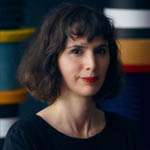 I am Marta Figueiredo, an Australian-Portuguese architect and multidisciplinary artist based in Naarm/Melbourne. My work revolves around creating playful, engaging, and sensory-rich experiences that challenge conventional ideas about design and architecture. My aspiration is to foster a more profound and multi-dimensional relationship between the individual and the designed object or installation. Recently, my focus has been on an upcoming project delving into personal experiences, aiming to bring people together and encourage meaningful dialogues. This project centres around a cabinet intended to serve as a platform for collective healing and introspection. Visit marta-figueiredo.com/ and follow @martafigueiredo_figgoscope.
I am Marta Figueiredo, an Australian-Portuguese architect and multidisciplinary artist based in Naarm/Melbourne. My work revolves around creating playful, engaging, and sensory-rich experiences that challenge conventional ideas about design and architecture. My aspiration is to foster a more profound and multi-dimensional relationship between the individual and the designed object or installation. Recently, my focus has been on an upcoming project delving into personal experiences, aiming to bring people together and encourage meaningful dialogues. This project centres around a cabinet intended to serve as a platform for collective healing and introspection. Visit marta-figueiredo.com/ and follow @martafigueiredo_figgoscope.


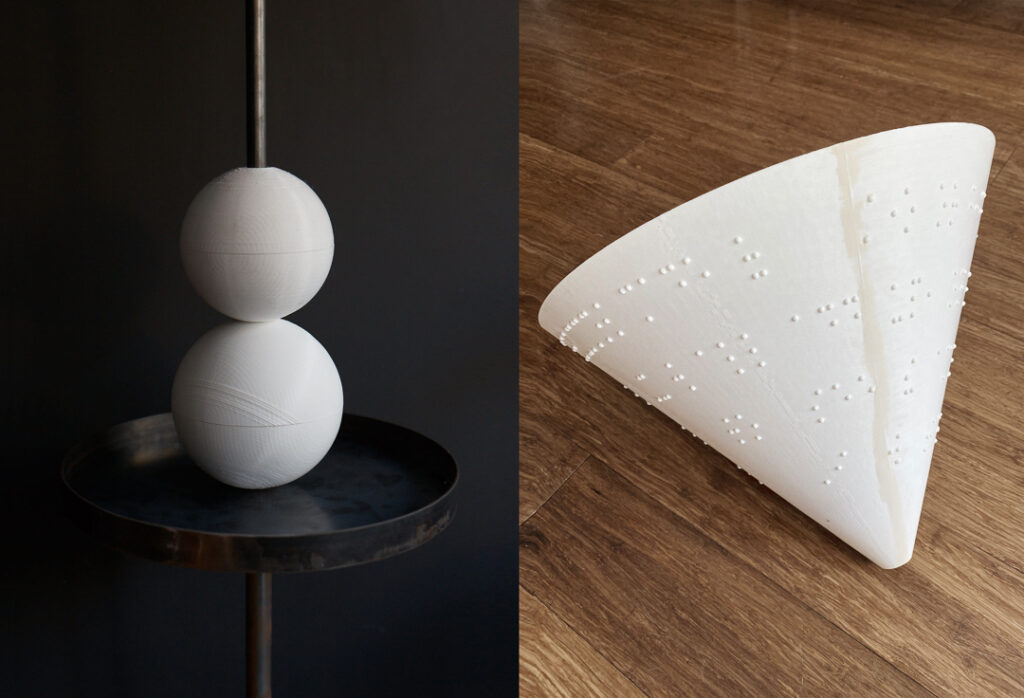
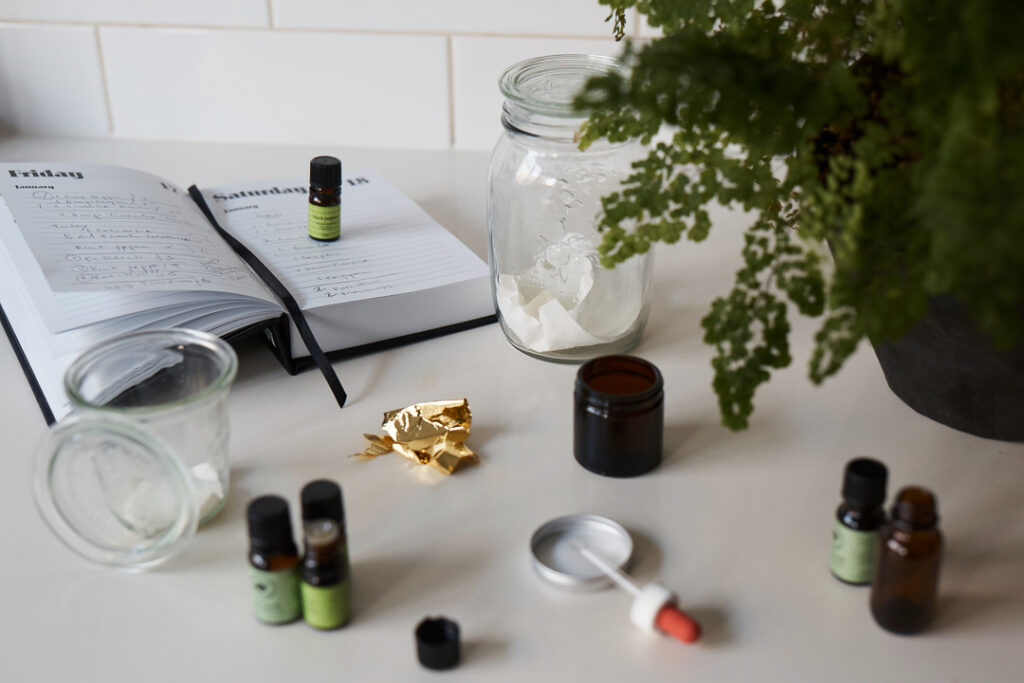
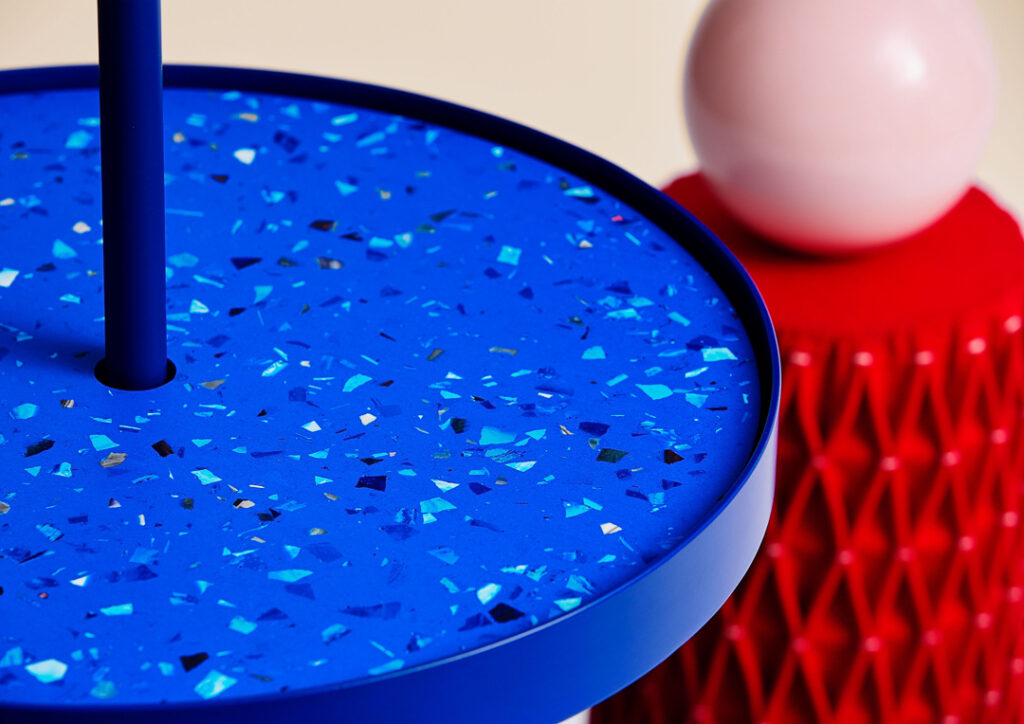


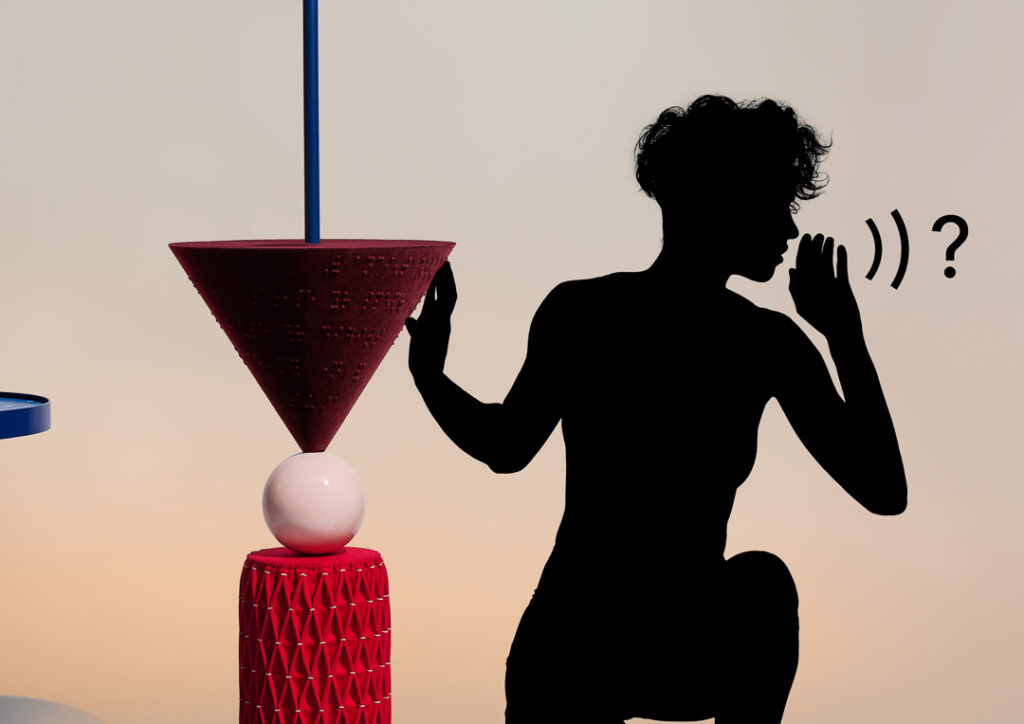
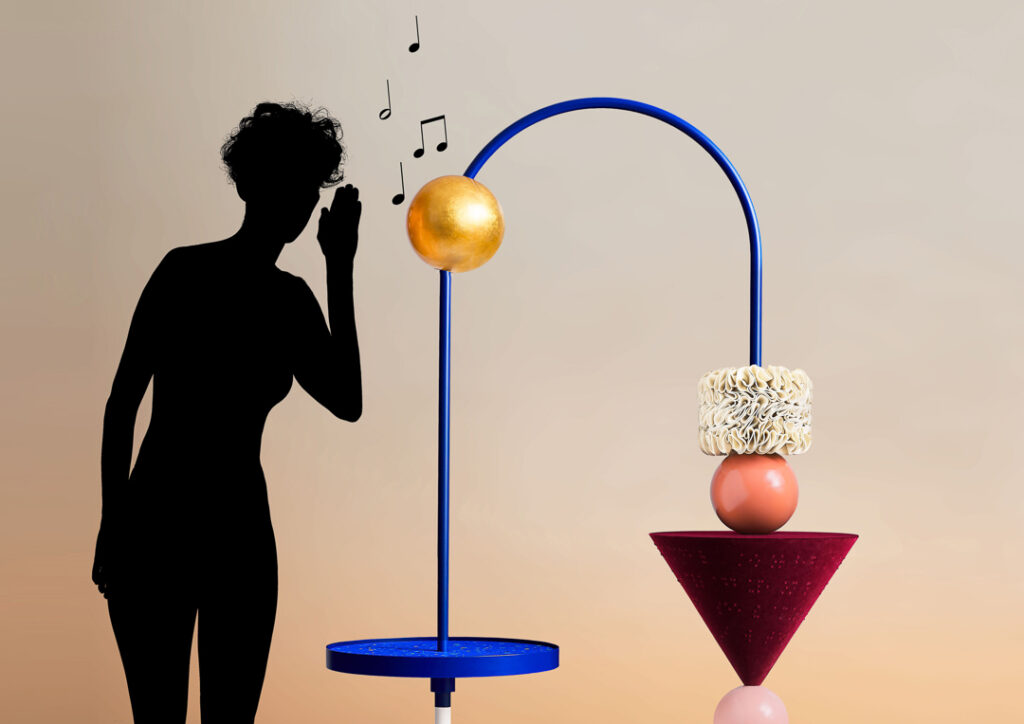


Comments
Beautifully conceived and realized. Looking at your work brought to mind the pleasure of hearing beads on an abacus click against each other, a sound I love.